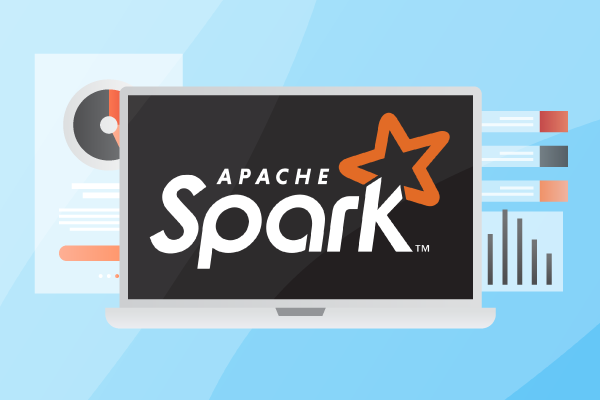Apache Spark
 Utsav Gohel
Utsav Gohel
Here I am attaching a file of lab practice work that I have done in my lab session on big data working with spark. you can download those file by clicking the link
Data Processing file (python file)
Data set File
What is Apache Spark?
Apache Spark is an open-source, distributed data processing framework designed for speed, ease of use, and advanced analytics.
Key Features:
In-Memory Processing: Spark processes data in-memory, which makes it significantly faster compared to Hadoop MapReduce.
Diverse Workloads: It supports batch processing, interactive queries, real-time streaming, and machine learning.
Ease of Use: Offers high-level APIs in multiple languages like Scala, Python, and Java.
Resilient Distributed Datasets (RDDs): Fundamental data structure in Spark for fault-tolerant distributed data processing.
Built-in Libraries: Includes libraries for SQL, streaming, machine learning (MLlib), and graph processing (GraphX).
Comparison with Hadoop MapReduce:
Performance: Spark is faster due to in-memory processing, while Hadoop MapReduce relies on disk-based storage, which results in slower data access.
Ease of Use: Spark provides higher-level abstractions, making it more developer-friendly, whereas Hadoop MapReduce requires more code for the same tasks.
Data Processing: Spark supports both batch and real-time data processing, whereas Hadoop MapReduce is primarily batch-oriented.
Data Sharing: Spark uses RDDs for data sharing across tasks, while Hadoop MapReduce relies on HDFS for data sharing.
Iterative Processing: Spark is better for iterative algorithms (e.g., machine learning) because it keeps data in memory.
Ecosystem: Hadoop has a well-established ecosystem with tools like Hive, Pig, and HBase, while Spark is rapidly growing and has a rich ecosystem as well.
Resource Management: Spark can work with multiple cluster managers, including Hadoop YARN, Mesos, and its built-in cluster manager.
Key Takeaways:
Apache Spark is a fast, versatile, and in-memory data processing framework.
It outperforms Hadoop MapReduce in terms of speed and ease of use.
Spark supports batch, real-time, and machine learning workloads.
RDDs are the core data structure in Spark for distributed data processing.
Spark has a growing ecosystem and can work with various cluster managers.
Python + Spark = PySpark
here is some command you can practise in google collab to get better idea working with apache spark and sql data in Bigdata analysis
Certainly! PySpark is the Python library for Apache Spark, which is used for distributed data processing. Here are some important PySpark commands and practices to get you started:
1. Initializing a Spark Session: To use PySpark, you need to create a SparkSession, which is the entry point to any Spark functionality. You typically do this at the beginning of your PySpark script.
pythonCopy codefrom pyspark.sql import SparkSession
spark = SparkSession.builder.appName("MyApp").getOrCreate()
2. Loading Data: PySpark supports reading various data formats. For example, to load data from a CSV file:
pythonCopy codedf = spark.read.csv("data.csv", header=True, inferSchema=True)
3. Viewing Data: You can view the first few rows of a DataFrame using the show() method:
pythonCopy codedf.show()
4. Data Transformation: PySpark provides various functions for data manipulation. For instance, you can filter and select columns:
pythonCopy codedf_filtered = df.filter(df["column_name"] > 10)
df_selected = df.select("column1", "column2")
5. Aggregations: You can perform aggregations on your data using functions like groupby and agg:
pythonCopy codedf_grouped = df.groupby("group_column").agg({"agg_column": "sum"})
6. SQL Queries: PySpark supports SQL queries on DataFrames. You can run SQL queries using the sql method:
pythonCopy codedf.createOrReplaceTempView("mytable")
result = spark.sql("SELECT * FROM mytable WHERE column > 10")
7. Machine Learning: PySpark's MLlib library offers a wide range of machine learning algorithms. For example, to train a regression model:
pythonCopy codefrom pyspark.ml.regression import LinearRegression
lr = LinearRegression(featuresCol="features", labelCol="label")
model = lr.fit(df)
8. Saving Data: You can save the results back to various formats:
pythonCopy codedf.write.csv("output.csv", header=True)
9. Caching: You can cache DataFrames to improve performance for iterative operations:
pythonCopy codedf.cache()
These notes should give you a good foundation for understanding Apache Spark and its differences from Hadoop MapReduce.
Subscribe to my newsletter
Read articles from Utsav Gohel directly inside your inbox. Subscribe to the newsletter, and don't miss out.
Written by
